Lucid October 2018 Newsletter
- New and updated keys
- New and updated mobile apps
- Keys and apps coming soon
- Melbourne workshop
- Lucid Spotlight - Q-bank: Invasive plant keys for Europe
- Lucid, Lucid Mobile and Fact Sheet Fusion news
New and Updated Keys
What Bug Is That?
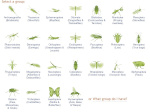
A Guide that provides identification keys and information on over 600 Australian Insect Families.
Developed by the Taxonomy Research and Information Network, involving CSIRO and other agencies.
Thysanoptera Chinensis

Thripidae Genera from China. An identification and information system for 98 genera of the Thysanoptera family, Thripidae that are thought to occur in China.
Authors: Shimeng Zhang, Laurence Mound and Anne Hastings
Key to 42 Adult Female Mosquito Species of China (Diptera, Culicidae)

This key is an interactive diagnostic tool to help identify the medical important species of China, which comprises 33 species, forming a multivariate matrix of 76 morphological characters and more than 410 images to support identification of adult female mosquito species.
Recent keys and Pest Identification tool from the USA
Bee Identification and Information Tool
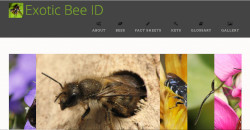
The Identification Technology Program (ITP) that supports the biosecurity organisation (APHIS) of the US Department of Agriculture has recently released a new Identification and Information tool - Exotic Bee ID.
Like other countries, the USA has experienced a decline in some bee populations, due to habitat loss, pesticides, parasites and pathogens, as well as the introduction of non-native bee species. Exotic Bee ID has been designed to help those working at ports, state departments and extension services who monitor and intercept non-native bees in the US. It will also be of interest to non-experts with an interest in learning features important in bee identification.
This initial release is the first of three phases: future releases will include keys, fact sheets, and images for additional bee families and genera. This phase includes:
- Instructions on bee specimen preparation
- Bee morphology illustrations
- Illustrated glossary of terms
- Filterable image gallery
- Searchable fact sheets
- Two Lucid keys
Exotic Bee ID can be accessed at: https://idtools.org/id/bees/exotic/
Aquarium and Pond Plants of the World, Edition 3 (APPW e3)
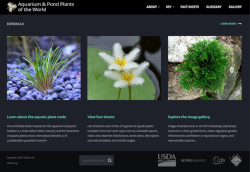
This key, also from the ITP team, is a major revision and update to the 2007 second edition. The worldwide trade in plants for use in aquaria and ponds is of considerable quarantine concern, particularly since many aquatic plants have the ability to disperse widely and become dominant in waterways, displacing native species. APPW e3 aims to cover all genera of aquatic plants cultivated commercially in nurseries and private collections around the world. Initially intended for officials at U.S. ports of entry and state departments of agriculture, this key is also useful to other biosecurity agencies and aquatic plant nursery managers, to help them become aware of invasive aquatic species in their stocks or among new acquisitions.
APPWe3 includes:
- 129 new genera; now a total of 270
- An additional 1,460 photos to enhance both new and existing taxa
- An image gallery that is now filterable
- An additional six aquatic federal noxious weed species included
- Illustrated glossary with many new terms
- Restructured, more usable Lucid key
This key can be accessed at https://idtools.org/id/appw/.
Watch for the APPW e3 Lucid Mobile app version, due to be published later this year.
Release of a new web interface to search for pest identification aids
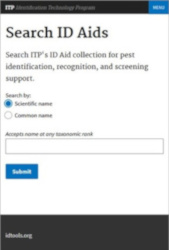 The USDA APHIS ITP team recently announced a new searchable interface for pest identification support. Built in cooperation with North Carolina State University's Center for Integrated Pest Management, Search ID Aids can be used to quickly find useful web-based identification and screening resources.
The USDA APHIS ITP team recently announced a new searchable interface for pest identification support. Built in cooperation with North Carolina State University's Center for Integrated Pest Management, Search ID Aids can be used to quickly find useful web-based identification and screening resources.
ITP maintains an ongoing collection of ID Aids: high-quality web-based tools and apps that support identification of plant pests of concern to PPQ. Each ID Aid is thoroughly reviewed and evaluated to ensure it has value and is from a reputable source. This collection currently includes over 3,800 vetted ID Aids that are image galleries, fact sheets, screening aids, keys of all types, molecular tools, and more, and they cover all plant pest groups. Since we're continually adding ID Aids, we also have a contact page where we welcome suggestions for pests to cover.
With Search ID Aids both experts and novices can find suitable identification resources. Search by either scientific or common pest name, and then instantly filter your results.
Find Search ID Aids at https://idtools.net/idaids/.
New and Updated Lucid Mobile Apps
Wattle: Acacias of Australia
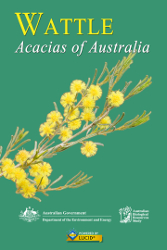
This new app covering 1,270 species of Acacia and three other related genera, was released on Wattle Day (1st September); wattle (or specifically the golden wattle (Acacia pycnantha Benth.) is Australia’s National floral emblem.
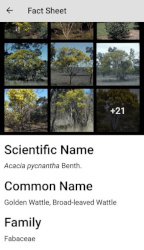
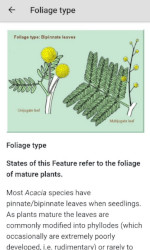
The identification and naming of wattles was greatly simplified in 2001 with the publication on CD of an electronic (Lucid) identification key called WATTLE; subsequently updated, this key was made available on the web in 2014. Now available as an app, it is the culmination of many years’ research by a team of Australian botanists, headed by Bruce Maslin.
This Wattle app contains copious feature state drawings and notes and fact sheets, including over 8,000 images of wattles displayed in an updated Lucid Mobile Fact Sheet design. Released on Wattle Day (1st September), a Media Release provides further information about this app and links to download sites - https://identic.com.au/blog/wattle-acacias-of-australia-media-release/
Lucid keys and apps coming soon
- Bunching vegetables by the Department of Primary Industry NSW. (Lucid Mobile)
- Sheep Parasites by the University of Melbourne. (Lucid Mobile)
- Edible wild orchids of Zambia by KEW Gardens. (Lucid Mobile)
- Spider Mites of Australia, Queensland Museum. (Web key)
- Wilding conifer of New Zealand, Landcare Research, New Zealand. (Lucid Mobile)
- Adult Frogs and tadpoles, Universidade Federal de Viçosa, Brazil. (Lucid Mobile)
More information will be available on these key once released.
Spotlight on Q-bank: Invasive plant keys for Europe

The Q-bank invasive plants database provides detailed species-level information on all plants species on the EU list of Union concern, associated with EU regulation 1143/2014. This includes fact sheets, look alike pages and DNA barcodes to facilitate identification during border inspection and verification of interceptions in support of the implementation of the EU regulation regarding invasive alien species.
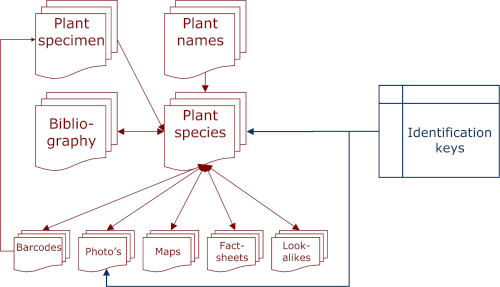
The first interactive key built for Q-bank was to deal with contaminants (weeds) of pot plants imported into Europe. Some of these weeds show invasive behaviour and proper identification is essential to track accidental introductions rapidly. The identification of the weeds in pot plants proved to be difficult as floras (the commonly used identification tools) generally only cover a limited geographical area. Moreover, “traditional” floras seldom include non-native weedy plants. The weeds to be identified originate from many different countries and continents and even include cultivated plants. This means that identification of these weed species using floras is falling short and, for that reason, an inspection tool for identification of these plants had to be developed.
The first species to be included in a key were based on an inventory of weeds found in bonsai plants imported from China. At a later stage more species were added as they were intercepted in pot plants imported from other production regions of the world. Currently the key covers 136 species.
We have chosen Lucid software since the resulting keys are extraordinarily user friendly and intuitive to use. They rely on a visual (‘image-driven’) mode of work, thereby avoiding as much as possible technical (or botanical) terms. The multiple entry keys do not require the user to select characters in a fixed sequence; the user scores characters in the order that suits him or her best. The results of characters selected are immediately shown on-screen. Another reason to choose Lucid is that the user only needs an internet browser and no other software.
The species in the keys are all illustrated by photographs showing the distinguishing characters and a link to species information on Q-bank is provided in the keys. Here users can find more information on the species, a selection of herbarium voucher specimens as well as molecular data. The links between the different databases on invasive plants within Q-bank are shown in the diagram below.
The keys on invasive plant species currently available are:
- Weeds in imported pot plants in Europe
- Invasive terrestrial plants in Europe
- Invasive aquatic plants
- Seedlings of invasive plants
- Seeds of invasive plants
- Pennisetum cultivars
Recent Lucid Melbourne Workshop

A recent Lucid workshop was held in Melbourne, Victoria at the Centre for AgriBioscience, Agriculture Victoria. The two day workshop covered Lucid key Building and Fact Sheet Fusion.
Participants covered a wide range of interests from fish, Miridae, Lygaeoidea to Lepidopteran larvae.
We would like to thank Dr Malipatil, for his help organising the workshop.
This workshop was sold out and we've had several requests for an additional workshop. So far requests have been for Sydney and Perth. If you would like to attend a Lucid workshop please let us know your preferred location.
Lucid, Lucid Mobile and Fact Sheet Fusion News
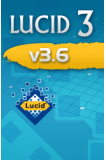 Lucid v3.6 Updated
Lucid v3.6 Updated
A new Lucid v3.6 update is now available. It adds additional features and corrects several minor bugs. Changes include:
Lucid JavaScript (Browser) Player
- Fixed thumbnail path bug (and also maintain old thumbnail paths for existing keys).
- Fixed html references from state gallery bug.
- Fixed Auto best/Prune settings for Javascript Player.
- Added export/deploy browser key in list view mode (entity and feature trees).
- Added Ranked sort mode, entities must be in list view mode to work. Expand top level features/entity groups on key start in browser player. (These options all controlled via existing key option settings)
- Fixed bug with numeric range comparisons (scaling, incorrect comparator)
- Shortcut features and Why Discarded options added
- Fixed entity list jumping in player.
- Progress spinner shown when loading large keys.
Lucid Builder
- Fixed dependency save bug.
- Fixed LIF3 Import bug from really old files (where scopes where set on features not states)
- Fixed missing ui resource in builder (Deploy Browser on media panel).
- Fixed score analyser bug.
- Fixed media list import bug where unsupported media types were included. Also fixed urldecoded filenames in media list
- Changes to thumbnail generation with alpha (transparent) layers.
- Fixed thumbnail paths for Unix path separators
- CSV export/import fixes - including not importing 'not scoped' scores.
- Media panel fixes (browse missing media, selection/focus behaviour).
- Selections and scoring mode now reflected in status bar.
- Item properties panels hidden on spreadsheet scoring and score analyser views.
- Changed numeric input behaviour slightly - (fixed cancel/save bug, prevent auto fill right of scores+add warning)
- Fixed reporting bug not outputting missing media reports. Cleaned up formatting in some of the other reports (list names, etc)
- Removed embedded javafx web browser.
- Further strengthen key save process to help avoid data loss. Added additional logging and exception details.
- Fixed check for updates function.
- Added additional key deployment check, if user trying to deploy to inside builder edition of the key folder a warning is shown.
- Fixed edit language bug.
- Fixed ui refresh bugs on key open/close tasks
- Natural language template now allows alternate conjunction and score modifier text to be defined at top level.
- Fixed progress dialog on key deployment
Click here to download the latest update
To purchase Lucid click here.
 Fact Sheet Fusion
Fact Sheet Fusion
A new update to Fact Sheet Fusion (v2.0.5.130) is now available (free to existing v2 licence holders).
This update includes:
New features and enhancements
- Further enhanced the detection and cross-linking of scientific names.
- Added a new option to automatically create a scientific name topic with formatted names.
- Added a progress bar for topic deletion.
- Added several new advanced media manager options such as automatic matching and attachment of media, reporting missing media and option to delete missing media references.
- Image viewer now automatically detects image orientation properties.
Fixes
- Fixed global find and replace function where it was not searching across glossary terms in some instances.
- Fixed cross-linking ordering problem where some shorter links were being applied before longer links.
- Fixed cross-linking issue where the text to be linked was wrapped in inverted commas.
- Fixed entity index where it was incorrectly processing alternative name siblings as sub alternative names.
- Corrected the image watermark generator preview in the Image Viewer.
- Hardened the glossary term saving function and included additional logging.
- Fixed glossary cross-linking of terms when linking on certain special characters.
- Fixed glossary cross-link when limited to a single topic.
Click here for more information on this update.
To purchase Fact Sheet Fusion click here.
-------------------------------------------------------------------------------------
To unsubscribe from communications please click [unsubscribe-here].